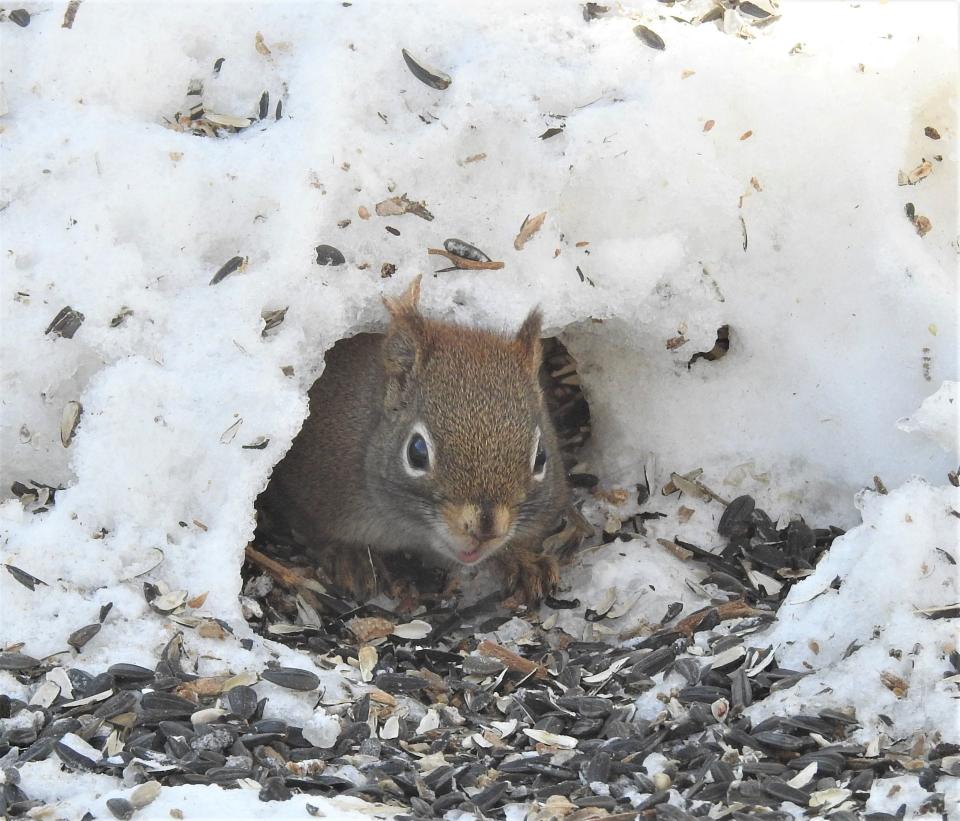Here's how squirrels and chipmunks survive the brutal winter: Nature News
Of the four types of squirrels that live in my neighborhood only the red and gray squirrels have been visiting the feeders. Chipmunks, the smallest members of the squirrel family, aren’t around in the winter. They semi-hibernate, instead of storing body fat they wake up periodically to snack on their stores of nuts and seeds. Flying squirrels are definitely visiting bird feeders, they don’t hibernate, but since they are nocturnal, we don’t notice them.
The recent arctic blast allowed me to spend more time than usual inside watching my bird feeder. I get both gray and red squirrels, however, on Saturday, that frigidly cold day that followed a night of deep sub-zero temperatures (-15 degrees Fahrenheit here in North Berwick) only the red squirrels were visiting. I assume the gray squirrels were tucked away in one of their well-insulated leafy nests (sometimes called dreys). These nests are amazing feats of engineering, twigs (with leaves attached) form a framework that supports multiple layers of leaves sturdy and insulated enough to keep out the most grueling weather-from driving rain to arctic cold. Researchers have found the inside of a drey can be between 60 and 80 degrees (Fahrenheit) warmer inside than outside as long as at least one squirrel is inside providing some body heat. A type of human survival shelter, called a debris hut, takes inspiration from squirrel dreys. I’ve tried to make these during winter survival classes-mine don’t even come close to an actual drey.

The red squirrels, however, were quite active. As iconic members of the northern boreal forest, red squirrels are made for snowy winters. Gray squirrels are more of a southern squirrel, their range extending up just a little north of the US border with Canada whereas red squirrels live quite happily up into northern Canada. So sub-zero temperatures are easy for them.
More Nature News:Snowshoe hares: The real rock stars of winter for more reasons than one
While watching my bird feeder this past week I learned something new about red squirrels and their adaptations for cold and snow–they tunnel. The opening to a tunnel through the snow had recently appeared at the base of my bird feeder. This, it turns out, is classic red squirrel behavior. Once there is enough snow on the ground for a tunnel they will construct a series of snow tunnels, often leading from one food source to another. How do they find their caches of food (stored back in the fall in preparation for winter)? Red squirrels have an amazingly sharp sense of smell-they can detect a buried pine nut or acorn through more than a foot of snow! In addition to providing some protection from predators, subnivean (under the snow) tunnels also help keep them out of the elements. While probably not as warm as a drey, these tunnels generally stay around 32 degrees Fahrenheit no matter how cold it gets up in the air. If they use these tunnels to get to their own food caches, it makes sense they’ll use them to get to the bird feeder. Next time you see a snow tunnel opening up near your feeder, look for a red squirrel. I love to think about them tunneling around under the snow pack, following their noses at they dig.

Susan Pike, a researcher and an environmental sciences and biology teacher at Dover High School, welcomes your ideas for future column topics. Send your photos and observations to spike3116@gmail.com. Read more of her Nature News columns online at Seacoastonline.com and pikes-hikes.com, and follow her on Instagram @pikeshikes.
This article originally appeared on Portsmouth Herald: How red, gray and flying squirrels brave the cold in Maine

